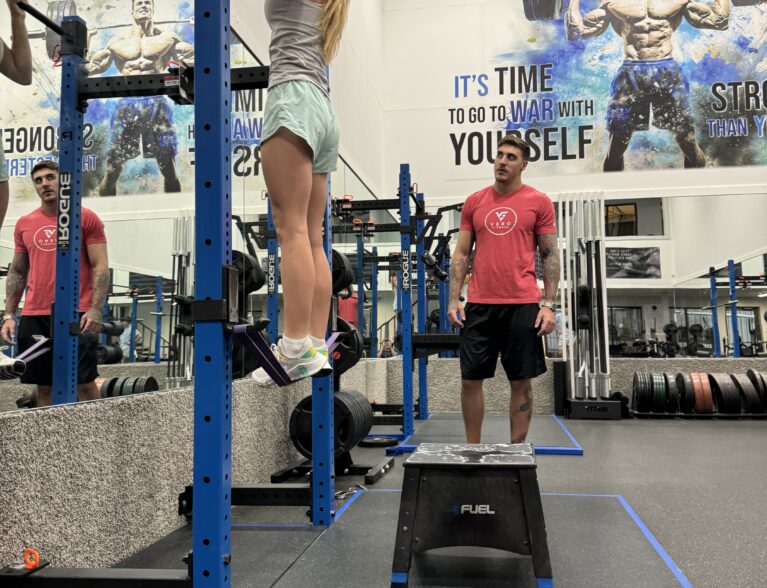
The way we perceive things changes at different times in our lives.
Take the core, for example. When we’re young, a super-developed six-pack or strong washboard is something to show off at the beach or gym. But as we age, we learn the core muscles affect virtually everything we do.
When they’re working well in concert, the core muscles hold the body in an upright position, stabilize the spinal column, hips and pelvis, and help transmit force from the lower extremities to the body and arms. When the muscles falter, so do those functions.
Jonah Lehmann, a longtime Vero Fitness ISSA (International Sports Sciences Association) certified trainer, said that a strong core will improve your overall health and life quality.
“You won’t have to worry that gardening, golfing or lifting a package will cause injuries.”
As you age, you tend to lose strength and muscle mass throughout your body. Maintaining core strength becomes even more essential for seniors since it plays a critical role in retaining a good posture, preventing injuries, and ensuring that your muscles support everyday activities.
Core exercises train the muscles in your core to work in harmony. This leads to better balance, steadiness and stability. Stability is important whether you’re on the playing field or doing regular activities. In fact, most sports and other physical activities depend on stable core muscles.
Medical News today explains that people with weak abdominal walls may experience digestion problems due to abdominal distention. Distention may cause bloating and other symptoms related to digestion. Core exercises can help strengthen the abdominal wall and, as a result, reduce abdominal distention and related symptoms.
Medical website Well + Good lists the following signs of a weak core:
- Your posture is sub-par.
- Your lower back arches when you walk.
- You have frequent lower back pain.
- You feel weak when throwing or jumping.
- You use objects and people around you as a “crutch.”
The core basically starts at the lower rib cage and extends to the buttocks and is comprised of many muscles. Think of it as a cylinder. It wraps 360 degrees, and many muscles interact with each other in a systematic way.
Lehmann categorized the muscles in groups:
“The innermost muscle is the transverse abdominis, which is used for stability of the trunk.
“Next are the internal obliques, which control trunk rotation. They’re extremely important when you’re turning your body in daily life or – recreationally – if you’re golfing or playing tennis.
“The external obliques are the ‘visual abs’ in the front and side. They affect lateral flexion, bending side to side.
“The rectus abdominis is what we commonly call the six-pack, although in reality it’s an eight-pack,” concluded Lehmann.
Exercise is essential to maintain a strong core, and like most other healthy lifestyle choices, the earlier you start the better. Things like playing sports on your own or active games with your children are a normal part of life, but how do you find a training or strengthening program that works for you?
Lehmann said you can definitely do exercises on your own, but a trainer can be helpful, showing you the proper way to do them. The job of a good trainer includes education and teaching you how to work outside of a gym or fitness center.
Because there are so many muscles involved in the core, you can take advantage of variations and exercise daily.
In the old days, sit-ups and crunches were the go-to moves to keep your core muscles in good shape. But since they only strengthen a few muscles, those exercises are not as effective as was once believed.
On its website, Mayo Clinic explains in detail how to exercise at home, cautioning you to check with your healthcare provider before beginning.
It explains that core-strength exercises can be done on a carpeted floor or mat. Breathe freely and deeply during each exercise. Focus on tightening the deepest abdominal muscle. Aim to do one set of 12 to 15 reps for each exercise.
Some of the best-known exercises (and ones with which you may already be familiar from Pilates or aerobics) include:
- Abdominal crunch
- Bridge
- Single-leg abdominal press
- Double-leg abdominal press
- Quadruped
- Modified plank
- Side plank
- Superman
There are easy-to-follow directions and illustrations on Mayo Clinic’s website.
Jonah Lehmann has a BS degree in Health and Human Performance with a coaching minor, and is an ISSA Certified Personal Trainer. Until recently, he worked as a personal trainer at Vero Fitness, which is located at 1060 6th Ave., Vero Beach: 772-567-1400.



